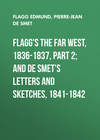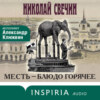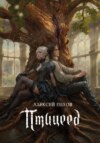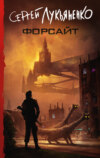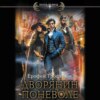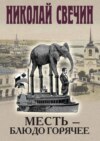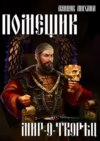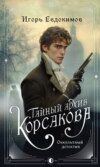Читать книгу: «Flagg's The Far West, 1836-1837, part 2; and De Smet's Letters and Sketches, 1841-1842», страница 7
PREFACE
To those who love their country, and their fellow men, we present this interesting Narrative, with the hope, we might say, the certainty, that its perusal will afford them some moments of the purest gratification. We have seldom met any thing more entertaining. Its simple, manly eloquence enchants the attention. The facts it makes known to us of the "far, far West," the dispositions and habits of the Indian Tribes who roam over the vast region of the Oregon, their present state and future prospects, are such as cannot fail to awaken lively interest in all who love to look around them beyond the narrow horizon of every-day scenes, and learn what the holy servants of God are doing for His sake and in His name in distant parts of the world. We have conversed with the apostolic man from whose pen we receive this narrative; and as we listened we felt at once honoured and delighted to be so near one who in our days and in his own person brings before us that lofty spirit of missionary devotedness – those thrilling scenes of Indian life and adventure which we so much admire in the pages of Charlevoix and Bancroft.
Truly our country is full of interest to those who watch its progress, and compare it with the past. Who, for example, could have dreamt that the Iroquois, the savage Mohawk, – under which name we best know the tribe, and whose startling yell so often made our forefathers tremble, – would have been chosen to kindle the first faint sparks of civilization and Christianity among a large portion of the Indian tribes beyond the Rocky Mountains? This is one of the singular facts which these pages present to us. They abound in others not less singular and interesting. Many of these Indian nations actually thirst after the waters of life – sigh for the day when the real "Long Gown" is to appear among them, and even send messengers thousands of miles to hasten his coming. Such longing after God's holy truth, while it shames our colder piety, should also enflame every heart to pray fervently that laborers may be found for this vast vineyard – and open every hand to aid the holy, self-devoted men, who, leaving home and friends and country, have buried themselves in these wilds with their beloved Indians, to live for them and God. One of their favourite plans at this moment is to introduce among them a taste for agriculture, with the means to pursue it. They believe it to be the speediest, perhaps the only way by which the Indians may be won from the wandering life they now in general lead and from the idle habits it engenders. To aid them in this philanthropic object is our sacred duty as men, as Americans, as Christians. It is at least one method of atonement for the countless wrongs which these unfortunate races have received from the whites. We should be grateful to have such an opportunity of doing good: let none suffer the occasion to pass unhonoured by some tribute to the noble cause – some evidence of their love for God, their country and their fellow man.
The frontispiece is from the pencil of one of the Indian Missionaries.
It blends the skill of the artist with the fancy of the poet, and will hardly be understood without a word of explanation. In the foreground we see several of the gigantic trees of the Oregon forests, fallen and crossing each other. On these repose two wolves, a squirrel and several serpents. Above, two Indian chiefs, surnamed in baptism after the great Apostles of the Gentiles, Peter and Paul, are supporting a large basket of hearts, – an offering to heaven from the grateful wilderness. On the right are the emblems of Indian life and warfare: the bow and arrows, battle-axe and shield. Below and above these are seen some of the most remarkable animals of the country – the bear, the wild horse, the badger, the graceful antelope, intermingled with the plover, the pigeon, the wood-cock, the bittern, and other birds of the region. On the left are the peaceful symbols of Christianity – the Bible and the Cross, the chalice and altar lights – the anchor, symbol of faith and hope – the trumpet, to proclaim the word of God and bid the desert bless His holy name. Here too we behold several of the noble animals of the territory – the buffalo, the deer and elk, the mountain sheep and different birds. In the distance are seen on the right, Indian mounds, and a water-spout rising from the river Platte, and on the left, the Rocky Mountains surmounted by the Cross. Festoons, composed of the various flowers the Fathers have met on their way over mountains and prairies and through lonely vallies, complete the picture – the whole supported at the extremities by different birds of the country, and in the centre by the American eagle, – fit emblem, we may say, of their own dauntless faith, as well as of the heroic spirit of the nation within whose borders they have their principal station, and from whose genuine piety they have received the most consoling assurances of final success, viz: the Flat Head Indians and the Pends-d'oreilles, who are styled, even by their foes, the "nation of chiefs."
Once more we earnestly commend the noble cause of these devoted Missionaries to the charity of every sincere Christian. The short time allowed to prepare the work for the press must be our apology for several imperfections or errors which may meet the eye of the reader.
BOOK I
Dies venit, dies tua
In qua reflorent omnia,
Lætemur et nos in viam,
Tua reducti dex-tera.
The days of spring are drawing near
When all thy flowers will re-appear,
And we redeemed by thy right hand,
Shall walk in gladness thro' the land.
LETTER I
St. Louis University, Feb. 4, 1841.
TO THE REV. F. J. B
Rev. and Dear Sir:
I presume you are aware, that in the beginning of last Spring, I was sent by the Right Rev. Bishop of St. Louis,80 and my Provincial, on an exploring expedition to the Rocky Mountains, in order to ascertain the dispositions of the Indians, and the prospects of success we might have if we were to establish a mission among them. It is truly gratifying to me to have so favorable a report to make. – My occupations do not allow me to enter into all the details; I shall therefore be satisfied at present with giving you a brief sketch of my journey and its result.
I started from Westport on the 30th of April, in company with the Annual Expedition of the American Fur Company, which for this year had appointed the rendezvous on Green River, a tributary of the Rio Colorado of the West.81 Captain Dripps, who commanded the caravan, treated me on all occasions with the most polite attention.82 On the 6th day of our journey I was seized with the fever and ague, and have been subject to it for nearly five months. Nothing particularly worth noticing, occurred during the journey, except, when we halted in the village of the Sheyennes.83 I was introduced to the Chiefs as a minister of the Great Spirit: they showed me great deference, and I was invited to a feast. I had to pass at first through all the ceremonies of the calumet; the great chief approached me to shake hands, and gave me a heartfelt "How do you do." – "Blackgown," said he, "my heart was filled with joy when I learned who you were. My lodge never received a visitor for whom I feel a greater esteem. As soon as I was apprised of your coming, I ordered my great kettle to be filled, and in your honor, I commanded that my three fattest dogs should be served up." The bravest warriors of the nation partook of the repast, and I availed myself of the opportunity to explain to them the most important tenets of Christianity. I told them the object of my visit, and enquired whether they would not be satisfied to have also Black-gowns among them, who would teach them to love and serve the Great Spirit, as he wished. "Oh yes," they eagerly answered, "we will gladly provide for every thing that they stand in need of; they will not die of hunger amongst us." I have no doubt but a zealous missionary would do a great deal of good among them. They are about two thousand in number. Their language, it is said, is very difficult. On the 30th of June we arrived at the rendezvous.84 An escort of warriors had been provided for me by the Flat-heads. Our meeting was that of children who come to meet their parent, and in the effusion of their heart, they bestowed upon me the fondest names with a simplicity truly patriarchal. They told me of all the interesting particulars of their nation, and of the wonderful preservation of sixty of their men, in a battle against two hundred Black-feet, which lasted five whole days, and in which they killed fifty of their enemies, without losing a single man of their number. "The Great Spirit watched over them;" they said, "he knew that we were to guide you to our camp, and he wanted to clear the road of all the obstacles that you might have found on your way. We trust we will not be annoyed any more by the Black-feet; they went off weeping like women." We thanked heaven for the signal preservation, and implored its assistance for the new and perilous journey we were on the point of undertaking. The Indians of different nations and the trappers, had assembled at the rendezvous in great numbers, for the sake of the trade. On Sunday, the fifth of July, I had the consolation of celebrating the holy sacrifice of Mass sub dio. The altar was placed on an elevation, and surrounded with boughs and garlands of flowers; I addressed the congregation in French and in English, and spoke also by an interpreter to the Flat-head and Snake Indians. It was a spectacle truly moving for the heart of a Missionary, to behold an assembly composed of so many different nations, who all assisted at our holy mysteries with great satisfaction. – The Canadians sung hymns in French and Latin, and the Indians in their native tongue. It was truly a Catholic worship… This place has been called since that time, by the French Canadians, la prairie de la Messe.
About thirty of the principal chiefs of the Snake Indians invited me to a council.85 I explained to them the Christian doctrine in a compendious manner – they were all very attentive – they then deliberated among themselves for about half an hour, and one of the chiefs, addressing me in the name of the others, said: "Black-gown, the words of thy mouth have found their way to our hearts; they never will be forgotten. Our country is open for thee; come to teach us what we have to do, to please the Great Spirit, and we will do according to thy words." I advised them to select among themselves a wise and prudent man, who, every morning and evening, should assemble them to offer to Almighty God their prayers and supplications; that there the good chiefs should have an opportunity of exhorting their warriors to behave as they ought. The meeting was held the very same evening, and the great chief promulgated a law, that for the future, the one who would be guilty of theft, or of any other disorderly act, should receive a public castigation. On Monday, 6th, we proceeded on our journey.86 A dozen Canadians wished to accompany me, to have an opportunity, as they said, to practise their religion. Eight days afterwards we arrived safely in the camp of the Flat-heads, and Ponderas, or Pends d'oreilles.87
Immediately the whole village was in commotion; men, women and children, all came to meet me, and shake hands, and I was conducted in triumph to the lodge of the great chief Tjolizhitzay, (the Big face.) He has the appearance of an old patriarch. Surrounded by the principal chiefs of the two tribes, and the most renowned warriors, he thus addressed me: "This day Kaikolinzosten (the Great Spirit) has accomplished our wishes, and our hearts are swelled with joy. Our desire to be instructed was so great, that three times had we deputed our people to the Great Black-gown88 in St. Louis, to obtain a father. Now, Father, speak, and we will comply with all you will tell us. Show us the road we have to follow, to come to the place where the Great Spirit resides." Then he resigned his authority to me; but I replied that he mistook the object of my coming among them; that I had no other object in view, but their spiritual welfare; that with respect to temporal affairs, they should remain as they were, till circumstances should allow them to settle in a permanent spot. – Afterwards we deliberated on the hours proper for their spiritual exercises and instructions. One of the chiefs brought me a bell, with which I might give the signal.
The same evening about 2,000 persons were assembled before my lodge to recite night prayers in common. I told them the result of my conference with the chiefs; of the plan of instructions which I intended to pursue; and with what disposition they ought to assist at them, etc. Night prayers having been said, a solemn canticle of praise of their own composition, was sung by these children of the mountains, to the Author of their being. It would be impossible for me to describe the emotions I felt at this moment; I wept for joy, and admired the marvellous ways of that kind Providence, who, in his infinite mercy, had deigned to depute me to this poor people, to announce to them the glad tidings of salvation. The next day I assembled the council, and with the assistance of an intelligent interpreter, I translated into their language the Lord's Prayer, the Hail Mary, the Apostles' Creed, the ten Commandments, and four Acts. As I was in the habit of reciting these prayers, morning and evening, and before instructions, about a fortnight after, I promised a beautiful silver medal to the one who would recite them first. One of the chiefs rising immediately, "Father," said he, smiling, "that medal is mine," and he recited all the prayers without missing a word. I embraced him, praised the eagerness which he had evinced of being instructed, and appointed him my Cathecist. This good Indian set to work with so much zeal and perseverance, that in less than a fortnight all knew their prayers.
Every morning, at the break of day, the old chief is the first on horseback, and goes round the camp from lodge to lodge. "Now my children," he exclaims, "it is time to rise; let the first thoughts of your hearts be for the Great Spirit; say that you love him, and beg of him to be merciful unto you. Make haste, our Father will soon ring the bell, open your ears to listen, and your hearts to receive the words of his mouth." Then, if he has perceived any disorderly act on the preceding day, or if he has received unfavorable reports from the other chiefs, he gives them a fatherly admonition. Who would not think, that this could only be found in a well ordered and religious community, and yet it is among Indians in the defiles and vallies of the Rocky Mountains!!! You have no idea of the eagerness they showed to receive religious instruction. I explained the Christian doctrine four times a day, and nevertheless my lodge was filled, the whole day, with people eager to hear more. At night I related those histories of the Holy Scriptures that were best calculated to promote their piety and edification, and as I happened to observe, that I was afraid of tiring them, "oh no," they replied, "if we were not afraid of tiring you, we would gladly spend here the whole night."
I conferred the holy sacrament of Baptism on six hundred of them, and if I thought it prudent to postpone the baptism of others till my return, it was not for want of desire on their part, but chiefly to impress upon their minds a greater idea of the holiness of the sacrament, and of the dispositions that are required to receive it worthily. Among those baptised, were the two great chiefs of the Flat-heads and of the Ponderas. As I excited the catechumens to a heartfelt contrition of their sins, the Walking Bear, chief of the Ponderas, answered: "Father, I have been plunged for a number of years in profound ignorance of good and evil, and no doubt, during that time, I have often greatly displeased the Great Spirit, and therefore I must humbly beseech his pardon. But when I afterwards conceived that a thing was bad, I banished it from my heart, and I do not recollect to have since deliberately offended the Great Spirit." Truly, where such dispositions are found, we may well conclude that a rich harvest is to be gathered.
I remained two months among these good people, and every day they were adding to my consolations, by their fervor in prayer, by their assiduity in coming to my instructions, and by their docility in putting into practice what they had been taught.
The season being far advanced, and as I had waited in vain for a safe opportunity to return to St. Louis, I resolved to commit myself entirely to Providence, and on the 7th of August,89 I took leave of my dear Neophytes. I appointed one of the chiefs to replace me during my absence, who should preside in their evening and morning devotions, and on the Sabbath exhort them to virtue, baptize the little children, and those who were dangerously ill. Grief was depicted on the features of all, and tears were glistening in every eye. The old chief addressed me, saying, "Father, the Great Spirit accompany thee in thy long and dangerous voyage; every day, morning and evening, we will address to him our humble supplications, that thou mayest arrive safely among thy brethren. And we will continue to do so, till thou be again among thy children of the mountains. We are now like the trees that have been spoiled of their verdure by winter's blast. When the snow will have disappeared from these vallies, and the grass begins to grow, our hearts will begin to rejoice; when the plants will spring forth our joy will increase; when they blossom, it will still be greater, and then we will set out to meet you. Farewell, Father, farewell."
The Chiefs would not suffer me to depart by myself – thirty of the bravest warriors were deputed as a safeguard to traverse the country of the Black-feet, who are very hostile to the whites, and they were instructed to accompany me, as far as need would be of their assistance. I resolved to take on my return a different route from the one I had taken in coming. I was induced to do so, in order to visit the Forts of the American Fur Company on the Missouri, and on the Yellow Stone, to baptize the children. After five or six days travelling, we fell in with a war party of the Crow Indians, who received us very kindly, and we travelled together for two days. Then we directed our course to the Big Horn,90 the most considerable of the tributary streams of the Yellow Stone. There we met another party of the same nation, who were also amicably disposed towards us. As there was question about religion, I availed myself of the opportunity to express to them the main articles of the Christian faith, and as I was depicting in lively colors the torments of hell, and had told them that the Great Spirit had kindled this fire of his wrath, for those who did not keep the commandments I had explained to them, one of the Chiefs uttered a horrid shriek. "If this be the case," said he, "then I believe there are but two in the whole nation who will not go to that place; it is the Beaver and the Mink; they are the only Crows who never stole, who never killed, nor committed all the excesses which your law prohibits. Perhaps I am deceived, and then we must all go together." When I left them on the next day, the Chief put a fine bell on my horse's neck, and invited me to take a turn round the village. Next, he accompanied me for six miles.
After several days of a painful journey over rocks and cliffs, we arrived at last at the fort of the Crows.91 It is the first the American Fur Company possessed in that country. My dear Flat-heads edified all the inhabitants by their fervor and their piety. As well in the fort, as on the road, we never missed performing in common, our evening and morning devotions, and singing canticles in honor of the Almighty. Frequently, during my stay with them, they had given me abundant proofs of their trust in Providence. I cannot forbear mentioning one instance that occurred during my travels in this place. One day as dinner was preparing and provisions scarce, a countryman of mine, who accompanied me, suggested the propriety of keeping something in reserve for supper. "Be not uneasy," said the chief, called Ensyla,92 "I never missed my supper in my life. I trust in the mercy of the Great Spirit, he will provide for all our wants." We had just camped at night, when the chief killed two stags. "Did I not tell you right?" he remarked, smilingly, to my companion. "You see the Great Spirit does not only provide for our wants of this evening, but he gives us also a supply for to-morrow."
Now began the most difficult and most perilous part of our journey. I had to pass through a country supposed to be overrun by war parties, of the Black-feet, Assineboins, Gros Ventres, Arikaras, and Scioux.93 All these nations entertained the most hostile dispositions towards the Flat-heads. I therefore dispensed with their services any farther. I again excited them to continue the good work they had begun; to be steadfast in their faith; regular in their devotions; charitable towards one another. I embraced them all and took my leave. Mr. John de Velder,94 a native of Ghent in Belgium, had volunteered his services to me at the Rendezvous. In consideration of the bad state of my health, I deemed myself very happy to accept of them; he has never left me since. He was now to be my only travelling companion. As there is no road, we followed the direction of the river; at intervals we were obliged to make immense circuits to avoid the steep and craggy hills that defied our passage. For two hundred miles, we had continually death before our eyes. On the second day, I discovered before daylight a large smoke at a distance of about a quarter of a mile. We hastily saddled our horses and following up a ravine we gained a high bluff unperceived. At night we did not dare to make fire for fear of attracting notice. Again about dinner time, we found on the road the carcase of a Buffalo, killed only two hours before; the tongue and the marrow bones with some other dainty pieces had been taken away. Thus the kind providence of our God took care to supply our wants.
We took a direction contrary to the tracks of the Indians, and spent a safe night in the cliffs of the rocks. The next day we struck upon a spot where forty lodges had been encamped, the fires were yet in full blaze.
Finally, we crossed the Missouri at the same place where, only an hour before, a hundred lodges of ill-minded Assineboins had passed, and we arrived safe and unmolested at Fort Union, situated a few miles above the mouth of the Yellow Stone. In all these Forts great harmony and union prevail; Mr. Kipps, the present administrator of them, is a gentleman well worthy of his station.95 Every where I was treated by these gentlemen with the greatest politeness and kindness, and all my wants were liberally supplied. As I was relating the particulars of this dangerous trip to an Indian Chief, he answered: "The Great Spirit has his Manitoos; he has sent them to take care of your steps and to trouble the enemies that would have been a nuisance to you." A Christian would have said: Angelis suis mandavit de te, ut custodiant te in omnibus viis tuis.96 On 23d of September we set out for the village of the Mandans, in company with three men of the fort, who had the same destination. We met on the road a party of 19 Assineboins, who were returning to their country from an unsuccessful expedition against the Gros Ventres. Their looks indicated their bad intentions: although we were but five in number, we showed a determined countenance, and we passed unmolested. Next day we crossed a forest, the winter quarters of the Gros Ventres, and Arikaras, in 1835. It was there that those unfortunate tribes were nearly exterminated by the small pox. We saw their bodies wrapped up in Buffalo robes, tied to the branches of the largest trees. It was truly a sad and mournful spectacle. Two days later we met the miserable survivors of these unhappy tribes. Only ten families of the Mandans, once such a powerful nation, now remain. They have united with the Gros Ventres and Arikaras. They received me with great demonstrations of friendship; I spent that night in their camp, and the next day crossed the Missouri in their canoe, made of a buffalo skin.97 The next day we came to the first village of the Arikaras, and on the following day to their great village, consisting of about a hundred earthen wigwams.98 This tribe also received me very kindly. On the 6th of October we started from the Mandan village, for Fort Pierre, on the little Missouri;99 a Canadian, whose destination lay in the same direction, accompanied us. The Commandant of the Fort had recommended to us in a special manner to be on our guard against the Jantonnois, the Santees, Jantous, Ankepatines, Ampapas, Ogallallas, and Black-feet Scioux, who have often proved very troublesome to white strangers.100 On the third day of our journey we fell in with an ambuscade of the Jantonnois and Santees; they did not do us any harm, but on the contrary treated us very kindly, and at our departure loaded us with provisions. The next day we fell in with several other parties, who showed us much kindness. On the ninth day we were on the lands of the Black-feet Scioux; this country is undulating and intersected with numberless little streams. For greater caution we travelled in ravines. Towards dinner time, a fine landscape, near a delicious spring, seemed to invite us to take some repose. We had scarcely alighted, when all on a sudden a tremendous yell alarmed us, and from the top of the hill under which we were, the Black-feet darted upon us like lightning. "Why do you hide yourselves?" asked the Chief, in a stern voice. "Are you afraid of us?" Dressed in my cassock with a crucifix on my breast, – a costume I always wear in the Indian country, – it appeared to me that I was the subject of his particular enquiry. He asked the Canadian what kind of a man I was. The Frenchman said I was a Chief, a Black-gown, the man who spoke to the Great Spirit. He assumed immediately a milder countenance, ordered his men to lay down their arms, and we performed the ceremonies of shaking hands and smoking the calumet of peace. He then invited me to accompany them to the village, situated only at a short distance. It consisted of about a thousand souls. I pitched my tent at some distance, in a beautiful pasture, on the margin of a fine stream, and invited the great chief to partake of a supper with me. As I said grace before meal, he enquired of the Canadian what I was about. He is addressing the Great Spirit, was the reply, in gratitude for the food he has granted us. The chief nodded a sign of approbation. Shortly after, twelve warriors, in full costume, stretched a large buffalo robe before the place where I sat. The chief, taking me by the arm, invited me to sit down. I was under the impression that there was question again of smoking the calumet. Judge of my astonishment, when the twelve warriors, seizing each a piece of the robe, took me up, and headed by their chief, carried me in triumph to their village. In the lodge of the great chief the most conspicuous place was assigned me, and he addressed me thus: "This day is the happiest of my life. For the first time do we behold among us a man who is so closely united with the Great Spirit. Black-gown, you see before you the chief warriors of my tribe; I have invited them to this feast, in order that they may keep the remembrance of your coming among us as long as they shall live." Then he invited me to speak again to the Great Spirit, (to say grace), I began in the name of the Father and of the Son, etc., and immediately all present lifted up their hands towards heaven; when I had concluded they all struck the ground. I asked the chief what they meant by this ceremony. "When we lift up our hands," said he, "we signify that all our dependence is on the Great Spirit, and that he in his fatherly care provides for all our wants: we strike the ground to signify that we are only worms and miserable creeping beings in his sight." He asked me in his turn, what I had told to the Great Spirit. Unhappily, the Canadian was a poor interpreter, still I endeavored to make them understand, as well as I could, the Lord's Prayer. The chief showed great eagerness to know what I said. – He ordered his son and two other very intelligent young men to accompany me to the fort, in order to learn the principles of the Christian doctrine, and to be at the same time a safeguard against the Indians who might be inimically disposed towards us. Two days afterwards we met an Indian, whose horse was bending under a load of buffalo meat. Seeing us without provisions, he requested us to accept what we might stand in need of, advising us to take the whole, for, said he, in the vicinity of the fort, game is very scarce. Five days afterwards we arrived at Fort Pierre. Thence I travelled through prairies for nineteen days successively. We were often obliged to cook our victuals with dried herbs – not a stick was to be found. When I arrived at Fort Vermillion,101 I was apprised that the Santees had been on a warlike expedition against the Pottawatomies, of the Council Bluffs, among whom I had labored the two preceding years.102
I invited them to a council, and gave them a severe reprimand for violating the solemn promise they had made me the preceding year, of living with their neighbors on amicable terms. I showed them the injustice of attacking a peaceable nation without being provoked; the dreadful consequences of the Pottawatomies' revenge, that might end in the extinction of their tribe. I was requested to be once more the mediator, and they told me that they had resolved to bury the tomahawk forever.103
Prior to 1822, the overland expeditions seem to have been composed of men on foot carrying their wares in packs. Later, pack horses were substituted, and by 1830 wagons were used almost exclusively. Owing to the dangers from hostile Indians, the traders going to Santa Fé or points in the Rocky Mountains formed themselves into caravans for mutual protection, with an organized system of guards and camps. See Gregg's Commerce of the Prairies, in our volume xix, pp. 198-201, for a description of these caravans. – Ed.
The Pend d'Oreille (Ear-ring) Indians, whose native name was Kalispel, were kindred to the Flathead, speaking a similar dialect. Their habitat lay northwest of the Flathead proper, upon the Idaho lake and its tributary river bearing their name. – Ed.
The Big Horn River, so called from the Rocky Mountain sheep, rises in the Wind River range, near the centre of Wyoming, flows north through the Big Horn Mountains into Montana, and bending toward the northeast joins the Yellowstone as its principal tributary. South of the Big Horn Mountains, the stream is usually called Wind River. The Big Horn Valley, the home of the Crows, was a rich fur-bearing region and frequently visited by trappers and traders. – Ed.
In reference to buffalo-boats or skin-boats, see Maximilian's Travels, in our volume xxiii, p. 279, note 246. – Ed.

